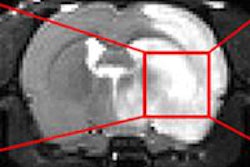Two Washington, DC-area hospitals found that improving their workflow led to stroke patients getting clot-busting drugs sooner, along with first-line MR imaging.
The time-saving techniques, referred to as Screening With MRI for Accurate and Rapid Stroke Treatment (SMART), were implemented at MedStar Washington Hospital Center in Washington, DC, and Suburban Hospital in Bethesda, MD. Study results were published online May 13 in Neurology.
The goal is to get stroke patients from the door of the emergency room to injection with intravenous tissue plasminogen activator (tPA) in 60 minutes or less. However, before tPA can be administered, patients must receive either a CT or MRI scan to see if they are suitable for the treatment. While MRI scans can provide valuable information, they take longer than CT and therefore are not routinely used first-line for acute stroke patients, according to a press release from MedStar hospital.
Process improvements from the SMART approach allowed the two facilities to use MRI and still reduce "door-to-needle" times by 40%, from 93 to 55 minutes. The hospitals used process maps to identify roadblocks that were causing delays, reorganized workflow to reduce patient handoffs, and assigned specific roles to each member of the stroke team, among other changes.


.fFmgij6Hin.png?auto=compress%2Cformat&fit=crop&h=100&q=70&w=100)





.fFmgij6Hin.png?auto=compress%2Cformat&fit=crop&h=167&q=70&w=250)











